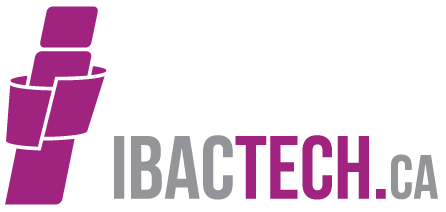January 2009
IBAC
Whitepaper on the use of residential insurance-to-value (ITV) cost calculators
In the absence of any one source that is able to assume complete ownership and the entire liability for the assignment of a specific value to an insurable property, the task of determining that value should be a shared responsibility
between the insurer, broker, consumer, and software vendor. As a shared responsibility, it is understood and accepted by all that the interests of the consumer remain paramount.
Introduction
Throughout 2008, insurance industry stakeholders across Canada have once again been discussing insurance-to-value (ITV) and how it affects their ability to provide service to customers. This issue has been discussed at length in years
previous with no real substantive outcome in terms of preferred method or solution.
As a result of some discussion within one provincial broker’s association, the subject of ITV was tabled nationally at the executive level of the Insurance Brokers Association of Canada (IBAC). The Technology Committee of IBAC was asked
to review the discussion and all materials associated with it, and to offer its comments. This whitepaper continues that discussion.
Problems, Issues, and Concerns
Brokers are dedicated to ensuring the best protection for their clients and work in utmost good faith to also provide insurers with the most complete and accurate information possible to assess their underwriting exposure. For many years,
insurance professionals have been challenged by issues stemming from the need to assess insurance-to-value for personal lines residential risks. These concerns will be discussed from the perspective of the consumer, the broker, and
insurers.
Consumers
When consumers are asked about choosing a replacement cost value for their property, most are unaware of how to derive such a value, and often do not know critical details about their own homes. While they may know basic information
such as square footage and some of the major enhancements done to their property, finer points such as electrical, plumbing, framing, the use of higher end materials, etc., often escape them.Most consumers genuinely wish their property to be insured to the value that it would cost to replace in the event of a loss. However, some consumers believe they may safely insure their property for less than its true replacement
cost, perhaps simply because they believe that the entire building, including foundations, would not be lost, or because their policy includes Guaranteed Replacement Cost (GRC). Of these, however, few are aware of the added conditions
that commonly attach to GRC clauses, and further, few will have considered the effect of other limits being eroded, such as contents coverage, as a result of having inadequate building limits.When a customer’s property value needs to be updated, a broker will take specific steps to contact that customer to review the property. Sometimes, however, customers do not respond to these requests promptly, which can create issues
for both the customer and insurance company in the event of a claim.Brokers
As an additional service, brokers have largely assumed the task of assisting customers with determining replacement cost values for their properties. And, in so doing, perhaps the biggest issue faced by brokers has been to understand
residential construction terms, practices, materials, etc., to a sufficient enough level in order to properly use ITV calculators.Brokers are not residential contractors – they are advisors assisting consumers to choose insurance products that best meet their individual needs. Despite the extra amounts of time devoted to gathering and reviewing construction data
from customers, a broker’s services cannot replace those of a professional appraiser or contractor.Replacement cost valuations performed by brokers are generated by software programs called insurance-to-value (ITV) calculators. The values generated by these programs can vary depending on how they are used, the data that is gathered
and how it is entered into the program, the knowledge of the broker with respect to building codes, standards, as well as labour and materials, and the accuracy of the information available regarding a particular risk. Such variation
in use can generate values that result in unexplained discrepancies between the tools themselves and from one broker to another.ITV calculators generate estimates by incorporating the information entered by the user with cost data that is an intrinsic part of the software program. It is crucial that this cost data is up-to-date in order to generate a value
that is as accurate as possible given current market conditions within a particular region of the country.Some brokers’ offices may use more than one ITV calculator. This can be problematic, resulting in the perception of anti-selection from an insurer’s perspective and in confusing, unexplained contradictions in a customer’s eyes. Customers
may find themselves underinsured if coverage for their property was based on choosing the lowest value generated from a choice of more than one ITV calculator.In addition, variations in how user-selectable options within calculators are applied can result in further discrepancies which erode confidence in the reliability of the evaluation process and in a broker’s ability to perform it.
Within a competitive business landscape, brokers should have options to choose tools (i.e., an ITV calculator) that best meet their business needs. As with any software purchase, decisions will depend on factors such as cost, product
and data updates, customer service and ease of use, new product features, innovation, accuracy in using newer short form calculations, etc. Different brokerages will have different preferences, and ideally should be free to follow
them. As the information for calculating ITV is not static over time, however, brokers must recognize the imperative of investing in updates and ongoing training to ensure that the most accurate results possible are obtained.The ITV data gathered relating to a client’s property is by necessity shared between the broker and insurer, and in some cases, the ITV software provider. Nevertheless, and regardless of how the information is collected, its collection
is solely for the purpose of evaluating a customer’s particular risk, and as such, remains an integral part of the client information assembled by the broker. It is unquestionable that the client and all information relating to
his policies belong to the broker, who holds the position of first agent for the client. Similarly, all data collected to perform replacement cost calculations must also be acknowledged as belonging to the broker, on behalf of
the client.Insurers
Ultimately, it is the insurance company that accepts the risk and responsibility of replacing property in the event of a loss, in exchange for a fair premium collected from the consumer. Insurance companies providing this service to
consumers should feelconfident that the premiums they collect are commensurate with the risk they have agreed to insure. Competition among insurers will continue to determine premium levels as it should. A greater risk or higher value attached to the property
in question should naturally warrant a proportionately higher amount of money to be collected by the insurance company. It is unreasonable to expect an insurance company to collect money from a consumer, based on a figure which
may be disproportionate to their actual risk exposure, that is, the true replacement cost for that property.When insurance companies receive applications from brokers for new home insurance, underwriters should feel reasonably confident that the value stated on the application represents the true replacement cost of the property or risk
in question. It is at the final discretion of each Insurer to decide whether to accept an application, and replacement cost calculation, as submitted. It is in all parties’ best interests to ensure that the estimates provided,
most often derived from ITV calculators, are as accurate as possible.Some insurers, however, have not endorsed all ITV calculators, or have not done so consistently in all regions. Where discrepancies are perceived, some insurance companies may give preferential rating to customers who submit values
based on a particular tool. This issue is further complicated when differences in construction costs are significantly higher (or lower) in one region of the country versus another. Within any given region at any given time, economic
activity, the supply and demand of labour, material costs, etc., all play a role in determining replacement cost values for a given property.
Outcomes
Ideally, there would be a single method for deriving a replacement cost value for a given property that would be true and accurate, and so accepted by the insurance company, the broker, and the consumer.
Since no such single method exists, and no single industry partner can assume entire responsibility for the task, there must be a shared process for deriving residential replacement cost values. While much of the work is performed by brokers,
as they are closest to consumers and are most knowledgeable within their own business community, the responsibilities for the final results are divided among all who are involved.
Responsibilities
All stakeholders involved in the process of determining values must share the responsibility for deriving true and accurate replacement costs as possible.
Responsibility of Insurers
Insurance companies are responsible for specifying how often reviews of a policy holder’s property value are required, confirming which calculator tools (including which versions) are acceptable to them and providing transparency into
their verification process.As they remain the final authority on whether or not they will accept any given risk, it is their responsibility to specify conditions attached to accepting that risk (i.e., offering insurance coverage on a specified property and under
what terms).Responsibility of Brokers
It is the responsibility of brokers to ensure consumers obtain proper insurance based on values they understand and acknowledge. It should also be a broker’s responsibility to ensure they are using tools with the most current and up-to-date
cost data, and adopt reasonable practices for the use of those tools. Brokers should also advise insurers of which calculator tool they select to use within their operation.Responsibility of Consumers
Ultimately, the consumer should know and take responsibility for the value of their own property and what it should cost (within reason) to replace it in the event of a loss. For many consumers, their personal property, be it
a home or their automobile, often represents their single largest asset. Understanding its proper value for replacement cost purposes is important.Responsibility of Software Vendors
Software vendors promote their ITV tools as providing accurate rebuilding cost estimates for post-loss scenarios. Of course, due to competition within the marketplace, much of their information must remain proprietary and confidential.
Nevertheless, it is incumbent upon vendors to work with the industry to enhance their software to work more effectively and accurately, when questions arise regarding patterns of discrepancies and call into question the accuracy
of the ITV tools. Such issues are exacerbated when a single vendor provides different products to direct writers, brokers, appraisers or claims estimators. discrepancies and call into question the accuracy of the ITV tools. Such issues are exacerbated when a single vendor provides different products to direct writers, brokers, appraisers or claims estimators.Recommendations
From the discussion thus far, there are a number of recommendations worth considering. The premise of these recommendations assume that deriving a true and accurate replacement cost value is a responsibility shared among the insurance company, the broker, the consumer and the software vendor
These recommendations are, in no particular order of importance:
- Insurance companies sanction the use of specific ITV calculators. This is to include product name, product version, and release date of acceptable cost data used to generate replacement cost values.
- Brokers will have free choice as to which calculator they will employ. Brokers may revise that choice as competition within the marketplace presents evolving options. Ideally, competition will ensure there will always be more than one available option, so that no one vendor monopolizes the marketplace. Brokers will not,
however, make use of more than one calculator at any one time, and will confirm to insurers, for the record, which calculator they have chosen.- Certain options within calculator software are accepted as required practices: the inclusion of foundations; contractor’s overhead and profit; architect’s fees; and premium wages.
- The lead responsibility for ensuring that replacement cost is calculated will remain with the brokerAs such, the ownership of all data collected will remain and vest with the broker. Clear language contracts need to be established between brokers and insurers, and between brokers and ITV software vendors, to confirm this principle.
- Current evaluations are mandatory when submitting new business and letters of authority. As such, the ownership of all data collected will remain and vest with the broker. Clear language contracts need to be established between brokers and insurers, and between brokers and ITV software vendors, to confirm this principle.
- The minimum default period for submitting updated valuations to insurance ompanies will be every 5 years Aunless specified otherwise by the insurer. Variations in this are left to the discretion of each insurance company. Regional economic differences will play a role in determining which municipalities across Canada will be exempt from this 5-year rule and subject to a schedule established by the insurer.
- Consumers should sign evaluation forms attesting to the documented value of their propertywhenever possible.
- Establishment of a neutral forum where stakeholders can evaluate the accuracy of ITV calculatorsis recommended. This will provide insurers with a higher level of confidence with respect to replacement cost values. It will also allow ITV software vendors to test the accuracy of their product against a known third-party’s independent baseline. This forum could be created within an impartial industry body which is not controlled by any one specific stakeholder.




